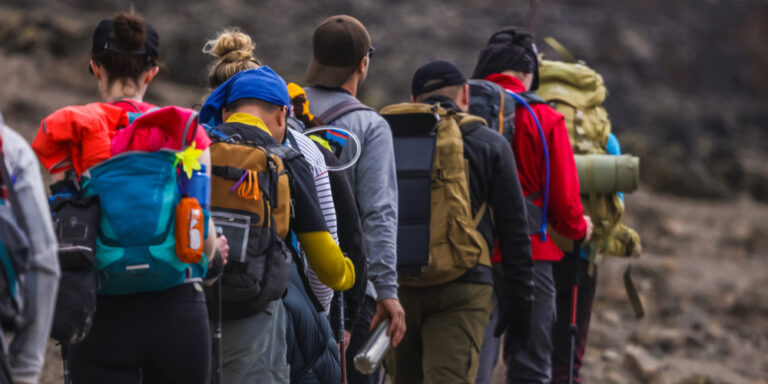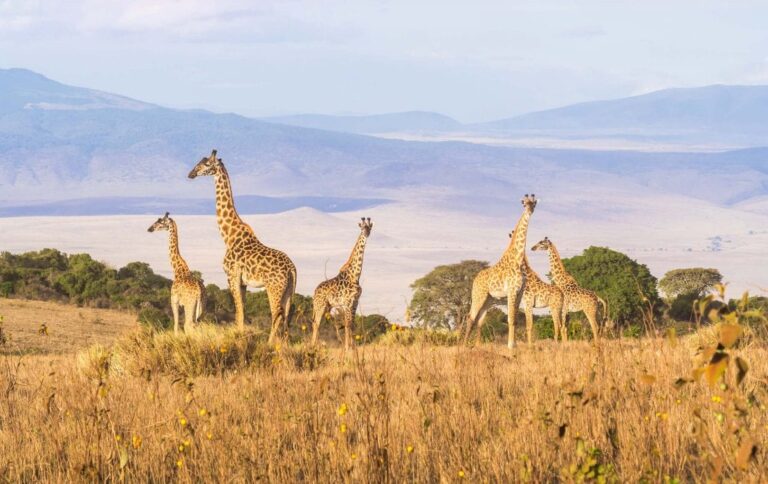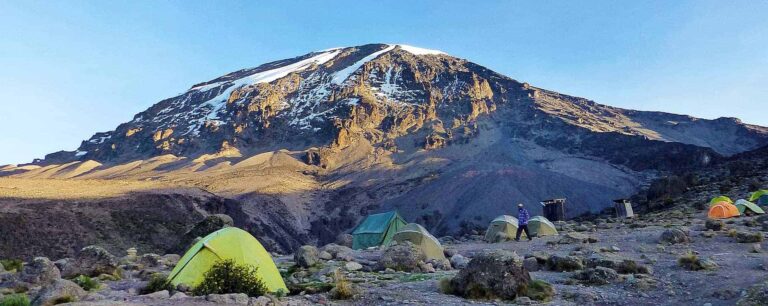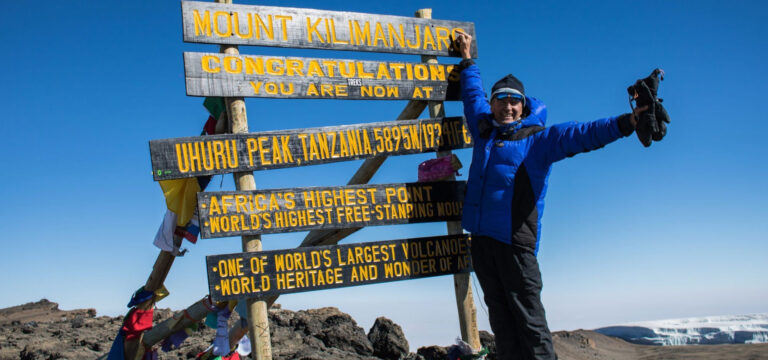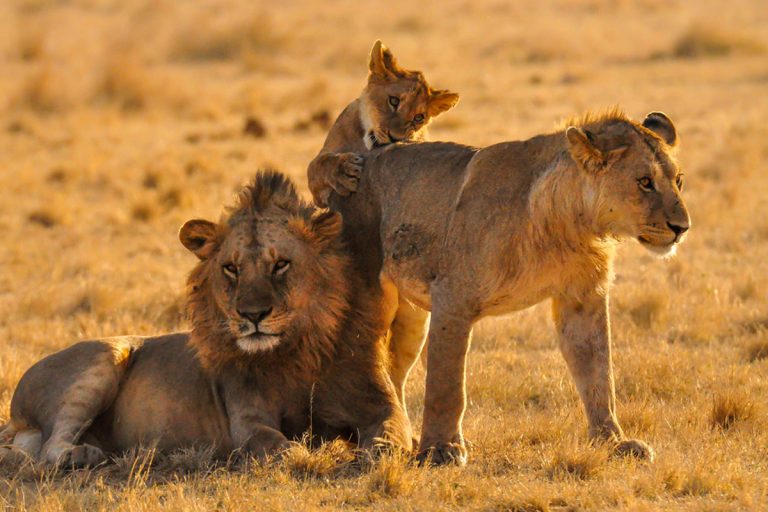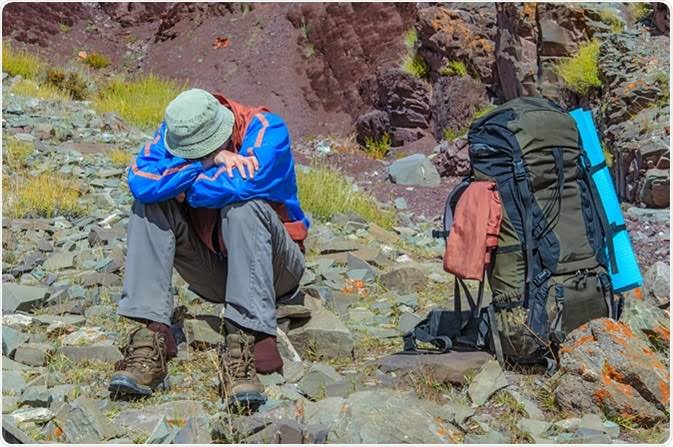[vc_row type=”vc_default” margin_top=”0″ margin_bottom=”-50″][vc_column offset=”vc_col-lg-6 vc_col-md-6 vc_col-xs-12″][ultimate_heading main_heading=”Mountain Trekking FAQS” alignment=”left” main_heading_style=”font-weight:bold;” main_heading_font_size=”desktop:34px;” main_heading_line_height=”desktop:44px;” main_heading_margin=”margin-bottom:25px;”][/ultimate_heading][vc_accordion active_tab=”false” collapsible=”yes” style=”3″][vc_accordion_tab title=”When is the best time to climb Mt. Kilimanjaro?”][vc_column_text]Mt Kilimanjaro can be climbed at any time of year. However, we recommend avoiding trekking during the heavy rain season between mid-March to May and instead considering trekking between June to February. Although November is a short rainy season, but trekking tours can be successfully organized.[/vc_column_text][/vc_accordion_tab][vc_accordion_tab title=”How fit do I need to be to climb Mt. Kilimanjaro?”][vc_column_text]The more fit you are, the more comfortable your climb will be, giving you a better chance of reaching the summit. Before going trekking, we recommend that you assess your health by consulting a doctor to ensure that your body will be able to withstand altitude changes and walk in a lower oxygen zone. Furthermore, you should engage in regular exercises such as jogging, squats, and push-ups to prepare your body for the upcoming adventure.[/vc_column_text][/vc_accordion_tab][vc_accordion_tab title=”Is there an age limit to trek Mount Kilimanjaro?”][vc_column_text]We don’t have an upper limit because it all depends on your health and fitness. However, the recommended minimum age is 18 years old.[/vc_column_text][/vc_accordion_tab][vc_accordion_tab title=”What are the most common altitude sicknesses encountered while trekking?”][vc_column_text]Clients typically experience altitude sickness after reaching an elevation of 3,000 meters or higher. Strong headaches, body weakness, stomach upset, nurture, loss of appetite, and dizziness are all common symptoms.
They may not be true diseases, but they are a sign that your body is adjusting to new weather and altitude. The best traditional treatment is to drink plenty of water and walk slowly.
It is not advised to take medicinal tables as soon after every reaction because those are “will of nature”. Your guide will constantly monitor your performance and advise you accordingly. If your symptoms last for an extended period of time, “like the entire day,” you should take a pain reliever.[/vc_column_text][/vc_accordion_tab][vc_accordion_tab title=”What are the rescue plans if one is unable to continue the trek?”][vc_column_text]We are proud to say that 98% of our clients reach the summit thanks to the proper guidance and assistance of our mountain team. When primary measures fail, the solution is an immediate descent to a lower altitude in the vast majority of emergency cases.
Our mountain crew is used to dealing with such situations, and if this occurs, the assistant guide can bring the trekker down to a safe altitude.
All trekkers pay a rescue fee to Kilimanjaro National Park, and if the client is unable to walk due to injury or illness, the guide contacts the park authority and arranges for a stranger to take the client down.
We strongly advise clients to purchase medical insurance that covers evacuations from the point of emergency to a nearby medical facility and to share the details with us during the booking process so that in the event of an emergency, we can assist in communicating with the flying doctor company for hospital evacuation.[/vc_column_text][/vc_accordion_tab][vc_accordion_tab title=”Is the First Aid Kit required?”][vc_column_text]All of our mountain guides are trained in first-aid and hold appropriate certificates, but we would strongly advise our visitors to take their first-aid kit with the following items; –
- Blister plasters. Absolutely essential.
- Ordinary plasters and antiseptic cream, for any little cuts and nicks
- A couple of bandages, in case of ankle strains, etc.
- Supports for knees and/or ankles, if you have weaknesses in these joints
- Paracetamol/Ibuprofen. You should have these (or other painkillers).
- Imodium for any stomach problems.
- Rehydrating powders are valuable in the event of diarrhoea.
- A good-quality lip salve/chapstick.
- A small tub of Vaseline to alleviate chafing.
- Throat lozenges to combat dry air conditions.
- Anti-fungal cream for the feet.
[/vc_column_text][/vc_accordion_tab][vc_accordion_tab title=”What is the water supply throughout the trek?”][vc_column_text]Water is available in streams found on the lower slopes of the mountains, which your mountain crew will fetch and treat before filling your bottles and camel bag for daily use. Treated water is provided from the second day until the end, whereas bottled water is only provided on the first day.
Our team is trained to properly treat your water and is happy to do so for you every day. If you prefer a specific flavour and aroma, it is recommended that you bring your own purification tablet and ask the guide to purify your water. Water and sodas can be purchased along the Marangu Route, though they are more expensive.[/vc_column_text][/vc_accordion_tab][vc_accordion_tab title=”What is the state of the mountain toilets?”][vc_column_text]The public toilets on the Kilimanjaro routes are nothing more than basic wooden sheds with a hole in the floor. They are frequently stinky, and you may not need to ask where the toilet is because you will be directed by smell.
Because they are public, everyone sleeping on some campsites uses the same facilities. It is recommended that you use a bandana to reduce the effects of the unpleasant smell in public restrooms.
Most trekkers use the same facilities, but some hire a private mobile toilet, which is carried and cleaned by your team’s toilet engineer. The toilet is privately pitched near your tent and can only be used by you and your party of up to four people per toilet.
Fortunately, things are constantly improving, and some campsites now have perfectly adequate facilities.
For example, all of the huts on the Marangu Route have English-style toilets, but all of the picnic sites have long-drop toilets. All toilets at Machame, Lemosho, and Rongai Route campsites and picnic areas are ‘long-drop,’ and the park authority is responsible for the overall cleanliness[/vc_column_text][/vc_accordion_tab][/vc_accordion][/vc_column][vc_column offset=”vc_col-lg-6 vc_col-md-6 vc_col-xs-12″ css=”.vc_custom_1491744105105{padding-bottom: 50px !important;}”][ultimate_heading main_heading=”Didn’t Find the Answer?” alignment=”left” main_heading_style=”font-weight:bold;” main_heading_font_size=”desktop:34px;” main_heading_line_height=”desktop:44px;” margin_design_tab_text=””][/ultimate_heading][dt_contact_form fields=”name,email,message” message_height=”5″ required=”name,email,message” button_title=”Send Question” button_size=”medium”][/vc_column][/vc_row]

